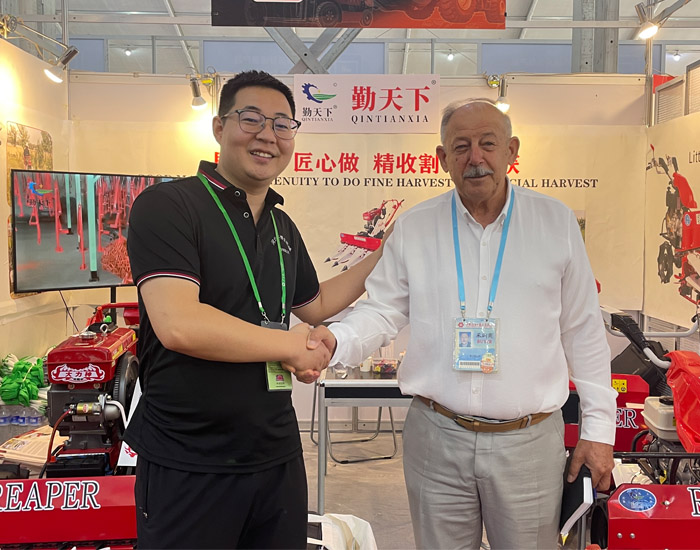Efficient Harvesting Techniques for High-Quality Fodder Beets in Modern Agriculture
The Fodder Beet Harvester An Essential Tool for Modern Agriculture
In the ever-evolving landscape of modern agriculture, the demand for efficiency, sustainability, and productivity continues to rise. This is particularly evident in the cultivation of fodder beets, a nutrient-rich crop invaluable for livestock feeding. The fodder beet harvester plays a pivotal role in simplifying the harvesting process, significantly impacting both the productivity of farms and the economics of livestock farming.
What is Fodder Beet?
Fodder beet, a root vegetable cultivated primarily for animal feed, particularly for cattle and sheep, is known for its high sugar content and nutritional value. These beets thrive in cooler climates and are often planted in late spring or early summer. By fall, they reach maturity, making them ready for harvest. Their unique ability to grow in poor soils and yield substantial volumes makes them an attractive option for farmers looking to optimize their forage resources.
The Role of Harvesters in Agriculture
Traditionally, the harvesting of fodder beets involved considerable manual labor and time. Farmers needed to uproot the beets and transport them to storage facilities, a labor-intensive process that could lead to delays and inefficiencies. As agricultural technology advanced, specialized machinery was developed, leading to the creation of the fodder beet harvester.
Fodder beet harvesters are designed to maximize efficiency, reduce labor costs, and ensure the beets are harvested with minimal damage. They utilize various mechanisms, such as lifting blades, augers, and conveyors, to uproot the beets and transport them smoothly, all while minimizing soil disturbance. The integration of technology in these machines has revolutionized harvesting practices, making them faster and more economical.
Benefits of Using a Fodder Beet Harvester
1. Increased Efficiency A significant advantage of using a fodder beet harvester is the drastic reduction in time required for harvesting. Where manual harvesting might take days, modern harvesters can complete the same task in hours, allowing farmers to allocate their time and resources to other areas of their operation.
fodder beet harvester

2. Improved Crop Quality Mechanical harvesters are designed to reduce the amount of soil and debris that clings to the beets after harvesting. This not only ensures a cleaner product but also enhances the quality of feed that reaches livestock. The reduced damage to the beets during harvesting means that more of the harvest is fit for consumption, further benefiting farm profitability.
3. Labour Savings As the agricultural sector faces a growing labor shortage, particularly in manual farm work, the use of fodder beet harvesters addresses these challenges head-on. By reducing reliance on manual labor, farmers can meet their operational needs without the stress of finding sufficient labor, allowing for a more streamlined farming operation.
4. Cost-effectiveness While the initial investment in a fodder beet harvester may be substantial, the long-term savings on labor and increased efficiency can greatly outweigh the costs. This machinery often results in a higher yield and better quality of forage, contributing positively to the bottom line for farmers.
5. Sustainability Modern harvesters are often designed with sustainability in mind, employing technologies that reduce fuel consumption and emissions compared to older models. By improving the efficiency of the harvesting process, farmers can reduce their carbon footprint while still fulfilling the growing demand for animal feed.
The Future of Fodder Beet Harvesting
As agricultural technology continues to advance, the capabilities of fodder beet harvesters will likely evolve as well. Innovations such as precision farming, data analytics, and advancements in machine learning are set to further enhance the efficiency and effectiveness of these harvesters. Farmers will not only be able to harvest beets more quickly but also gather data to inform better crop management practices for future planting and harvesting cycles.
Conclusion
The fodder beet harvester symbolizes the critical intersection of technology and agriculture. By embracing these modern innovations, farmers can enhance their productivity, sustainability, and ultimately their profitability. As the agricultural landscape continues to shift towards more efficient methods of production, the role of the fodder beet harvester will only become more pronounced, ensuring that this vital nutritional resource remains available for livestock and helps secure global food systems.
Latest news
-
When to Upgrade Your Old Forage HarvesterNewsJun.05,2025
-
One Forage Harvester for All Your NeedsNewsJun.05,2025
-
Mastering the Grass Reaper MachineNewsJun.05,2025
-
How Small Farms Make Full Use of Wheat ReaperNewsJun.05,2025
-
Harvesting Wheat the Easy Way: Use a Mini Tractor ReaperNewsJun.05,2025
-
Growing Demand for the Mini Tractor Reaper in AsiaNewsJun.05,2025







